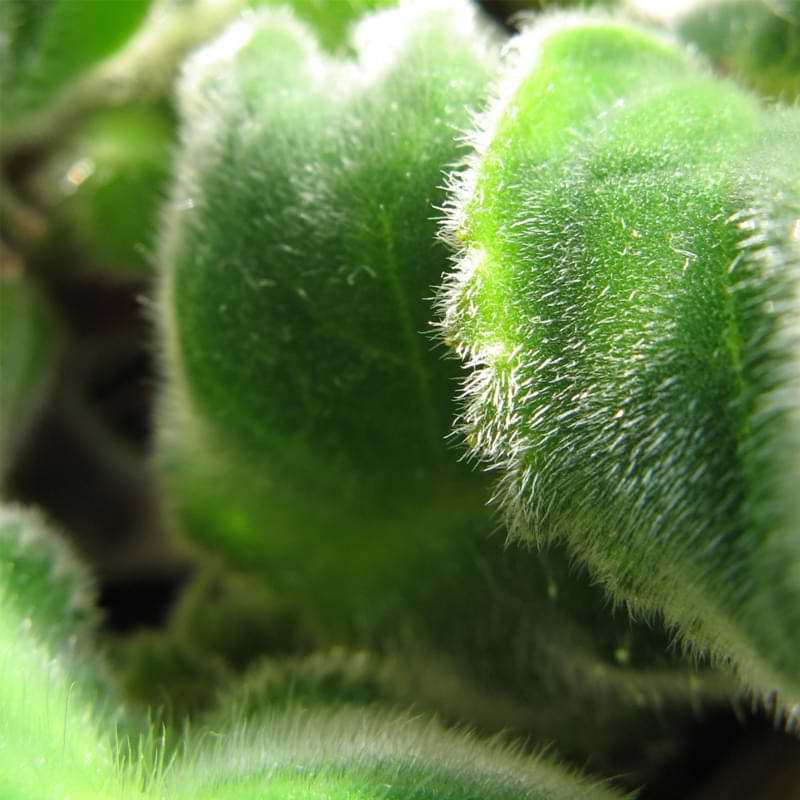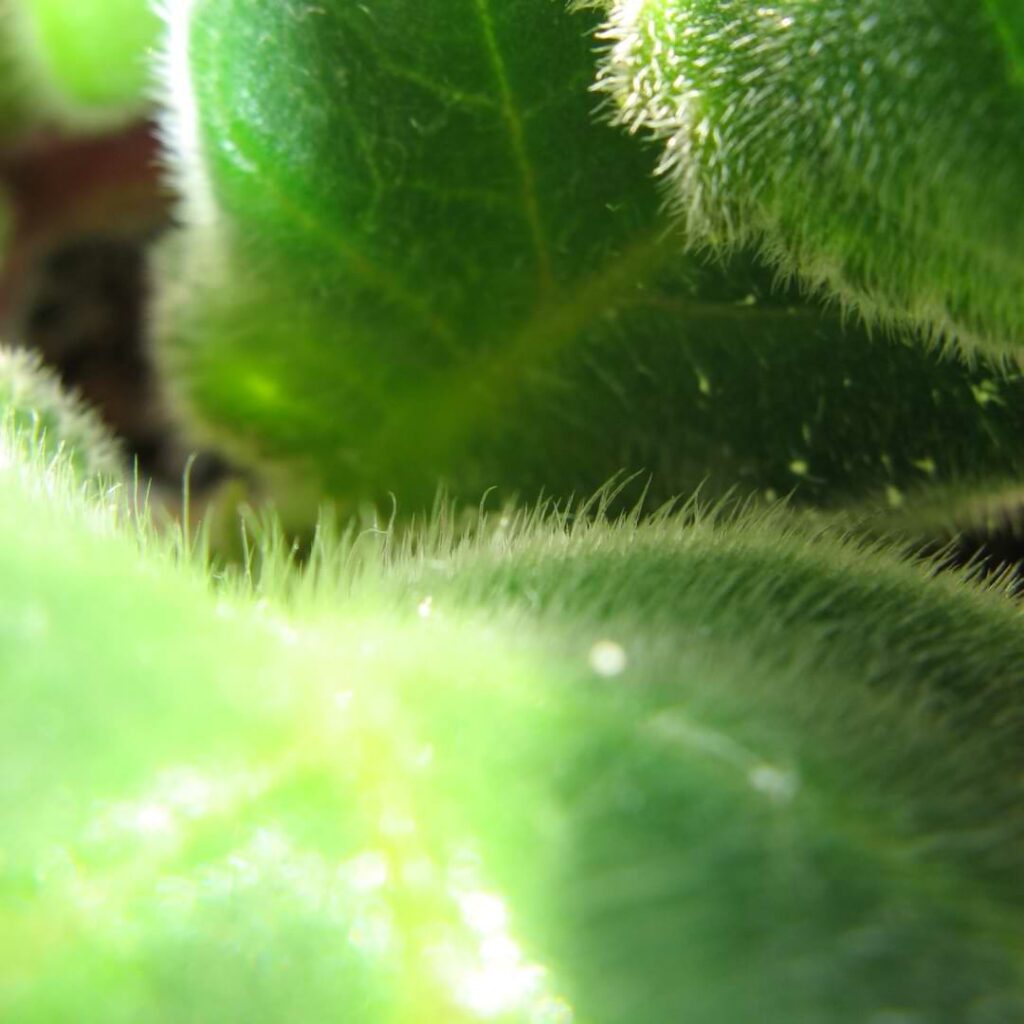If you’re a fan of indoor gardening, you’ve probably come across the charming African Violet. These delicate plants are known for their vibrant blooms and soft, fuzzy leaves that make them stand out from other houseplants. But have you ever wondered why African Violets have fuzzy foliage? Let’s talk about it!
Reasons for Fuzzy Leaves on African Violets
African Violets, or Saintpaulia spp., are native to the tropical regions of eastern Africa. In their natural habitat, they grow in shaded areas with high humidity levels. As such, African Violets have adapted by developing fuzzy leaves that serve several purposes.
Climate Control
The tiny hairs on the surface of African Violet leaves help regulate temperature and moisture levels. They act as a buffer against harsh environmental conditions such as direct sunlight and dry air.
African violets are native to tropical regions, and they thrive in warm, humid conditions. However, these plants can be sensitive to extreme temperatures or fluctuations in humidity levels. That’s where this plant has adapted long ago in an attempt to control environmental factors enough to allow the plant to thrive.
Protects Leaves from Water Damage
Another purpose of hairy foliage is to protect the plant from water damage. The tiny hair-like structures absorb excess moisture from rain or misting, which can cause rotting and leaf damage if left unchecked.
The fuzzy coating also creates a barrier between the leaf and any direct contact with water, reducing the risk of fungal growth or bacterial infection. This is especially important since African violets require regular watering but cannot tolerate overwatering or standing water.
Without this protective layer, African violet leaves would be more susceptible to damage from high humidity levels or heavy rainfall. They may develop brown spots, rotting areas or even fall off completely due to excessive moisture exposure.
Helps Prevent Crown Rot
African Violets are prone to crown rot, caused by overwatering or poor drainage. Their furry leaves help prevent this condition by wicking away excess water around the base of the plant where it can accumulate and cause problems. Of course, in addition to providing protection against crown rot, fuzzy leaves also give your African Violets a unique look and texture that sets them apart from other houseplants!
Pest Deterrent
One fascinating fact about these little hairs is that they also play a role in pest control! Tiny insects like spider mites find it difficult to move across fuzzy surfaces due to their sticky feet getting caught in between those hairs, making it difficult for pests to take hold and make the African Violet their home plant.
Furthermore, the texture of the leaves provides an unfavorable environment for pests to lay eggs or establish colonies. It also makes it harder for them to move around and feed on the plant’s sap. The fuzzy leaves not only repel insects but also discourage larger pests such as cats from nibbling on them. This gives African violets a better chance at survival in households with pets that love to chew or scratch plants.
Despite having a natural pest deterrent, it’s still important to keep an eye out for signs of infestation and take appropriate action if necessary. Regularly inspecting your plants can help you catch any potential problems early on before they become severe issues that could harm your African violet’s health.


Is It Okay to Touch African Violet Leaves
In general, it’s best to avoid touching the leaves of African violets as they are delicate plants and can easily get damaged. It will not harm you or the plant if you just have to touch the fuzzy leaves, but make sure you are being extremely careful so as not to damage the delicate foliage.
When you touch the leaves of an African violet, you risk damaging them by breaking off small hairs on their surface, and as we’ve learned, these hairs help protect the plant from water loss and damage caused by pests.
Moreover, touching the furry leaves can leave behind oils and dirt from your hands which can interfere with the photosynthesis process in its foliage. This interference might prevent proper absorption of nutrients necessary for healthy growth.
While occasional light touches won’t do much harm to your plant, repeated contact could cause physical damage leading to discoloration or browning off of patches on its vibrant foliage – affecting its overall appearance.
How To Clean Furry Leaves
Cleaning the African Violet leaves is essential to keep the plant healthy, thriving and beautiful, especially in a home where there may not be much of a breeze and dust can settle on the leaves fairly often.
To clean your African violet’s fuzzy foliage, you need a very soft-bristled brush such as a small paintbrush or makeup brush. Using lukewarm water with mild dish soap, gently brush each leaf using the soft-bristled brush. Be sure not to press too hard on the leaves as they can be delicate.
After cleaning all of the leaves thoroughly, rinse them under running water until all of the soap suds have been washed away. Avoid getting water on top of the soil so that it doesn’t become too moist. You may also use a damp cloth or paper towel to wipe down any remaining dirty areas if necessary.
If your plant has flowers present when you’re cleaning its leaves, be careful not to damage them while brushing around them. It’s best to avoid touching blooms altogether during this process.
You can opt to simply wipe off the leaves every now and then using a damp, soft cloth, but keep in mind that it’s easy to be too rough doing it this way, and that can harm the delicate fuzz on the leaves that we know is incredibly important for the plant’s health.
Verdict: Why Are African Violets Fuzzy
The unique fuzzy leaf feature of the African Violet serves several important purposes. From protecting against water damage to deterring pests and promoting healthy growth, the fuzz on these plants’ leaves plays a vital role in their survival.
Go ahead and feel those fuzzy leaves if you’d like, but be very careful and remember, the African Violet is a delicate plant!
More Great African Violet Resources
African Violet Fertilizer – How to Grow a Healthy Plant
Everything You Need to Know About African Violet Leaves





